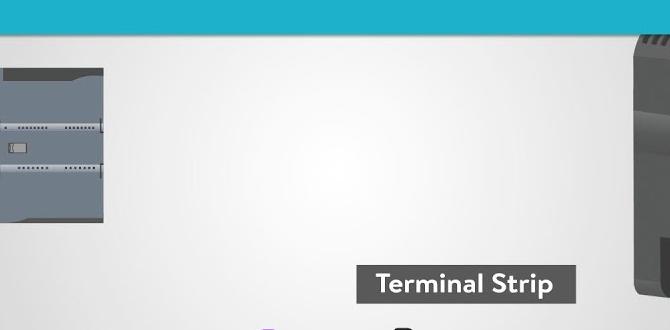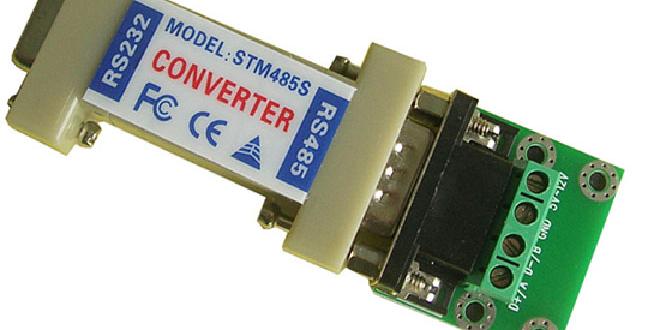RS485 communication is a widely used protocol in various industries for reliable and long-distance data transmission. This article provides an overview of RS485 communication, its advantages, protocol specifications, applications, implementation, troubleshooting, and future trends. Whether you are a technology enthusiast or a professional working with industrial automation or building automation systems, understanding RS485 communication is essential. Read on to explore the benefits, technical aspects, and potential challenges associated with RS485 communication.
Overview of RS485 Communication
Definition and Purpose of RS485 Communication
RS485 is a communication standard that allows multiple devices to communicate over a long-distance network. It is ideal for industrial environments due to its noise immunity and ability to transmit data over extended distances.
Advantages of RS485 Communication
High Noise Immunity
RS485 communication is designed to withstand electromagnetic interference and noise commonly found in industrial environments. Its balanced differential signaling reduces the impact of noise, ensuring reliable data transmission.
Long Distance Communication
One of the key advantages of RS485 is its ability to transmit data over long distances, up to 1.2 kilometers (depending on the baud rate and cable quality). This makes it a suitable choice for connecting remote devices in industrial and building automation systems.
Multiple Devices on the Same Bus
RS485 supports multi-drop configuration, allowing multiple devices to be connected on a single bus. This eliminates the need for individual point-to-point connections and simplifies the wiring and installation process.
RS485 Communication Protocol
Physical Layer Specifications
RS485 communication uses a differential signaling method, where the voltage difference between two wires determines the transmitted data. The physical layer specifications include the electrical characteristics, cable types, and connector standards.
Electrical Characteristics
RS485 operates on a balanced differential signaling mechanism, with a voltage range typically between -7V to +12V. The logic level is determined by the voltage difference between the two wires (A and B). A positive voltage difference represents a logical ‘0’, while a negative voltage difference represents a logical ‘1’.
Data Transmission Modes
RS485 supports both half-duplex and full-duplex modes. In a half-duplex mode, communication can happen in one direction at a time, while in a full-duplex mode, simultaneous two-way communication is possible.
RS485 Communication Applications
Industrial Automation
RS485 is extensively used in industrial automation systems for connecting various devices such as programmable logic controllers (PLCs), sensors, meters, and actuators. It provides a reliable and efficient means of communication in harsh industrial environments.
Building Automation
In building automation, RS485 is employed for controlling and monitoring systems such as HVAC (Heating, Ventilation, and Air Conditioning), lighting, access control, and security systems. Its long-distance transmission capability makes it suitable for large-scale buildings.
Smart Grid Systems
RS485 communication plays a vital role in smart grid systems, enabling communication between power generation, distribution, and monitoring devices. It facilitates real-time data exchange, remote monitoring, and control of utility infrastructure.
Implementing RS485 Communication
RS485 Transceivers
RS485 transceivers are used to convert the electrical signals of the RS485 protocol into a format that can be easily understood by microcontrollers or other communication devices. These transceivers provide the necessary voltage conversion, impedance matching, and signal conditioning.
Wiring and Termination
Proper wiring and termination are crucial for successful RS485 communication. The RS485 bus requires twisted-pair cables, with proper grounding and termination resistors at each end of the communication line to prevent signal reflections.
Protocol Configuration
Configuring the RS485 communication protocol involves setting parameters such as the baud rate, parity, stop bits, and data frame format. These settings should be consistent across all devices connected to the RS485 network.
Troubleshooting RS485 Communication
Signal Interference Issues
Interference from nearby electrical equipment or signal reflections due to incorrect termination can cause communication errors. Proper grounding, shielded cables, and addressing noise sources can help mitigate these issues.
Cable Quality and Length
Using poor quality cables or exceeding the recommended cable length for RS485 communication can lead to signal degradation. Ensuring the use of high-quality cables and adhering to the specified length limits is crucial for maintaining reliable communication.
Synchronization and Timing Problems
Inconsistent timing between devices on the RS485 network can result in data corruption. Ensuring proper synchronization and accurate timing among devices can resolve such issues.
Future Trends of RS485 Communication
Integration with IoT and Industry 4.0
RS485 is evolving to meet the requirements of the Internet of Things (IoT) and Industry 4.0. Integration with advanced communication protocols and technologies enables seamless connectivity between legacy RS485 systems and modern IoT platforms.
Enhanced Speed and Bandwidth
Continuous advancements in RS485 technology are enhancing its speed and bandwidth capabilities. Higher baud rates and improved data transmission rates allow for faster and more efficient communication.
Development of Advanced Error Detection Techniques
Efforts are being made to develop advanced error detection and correction techniques to improve the reliability of RS485 communication. These techniques help mitigate data corruption and ensure accurate transmission.
Conclusion
RS485 communication is a robust and efficient protocol widely used in industrial automation, building automation, and smart grid systems. Its high noise immunity, long-distance transmission capability, and support for multiple devices on the same bus make it an ideal choice for various applications. Implementing RS485 communication requires proper understanding of protocol specifications, wiring techniques, and troubleshooting methods. As technology advances, RS485 continues to adapt and integrate with emerging trends such as IoT and Industry 4.0, ensuring its relevance in the future.
Frequently Asked Questions
-
Can RS485 be used for short-distance communication?
Yes, RS485 can be used for short-distance communication as well. However, it is primarily designed for long-distance communication, and other protocols might be more suitable for short-distance applications. -
What is the maximum number of devices that can be connected on an RS485 bus?
RS485 supports multi-drop communication, allowing up to 32 devices to be connected on a bus. However, network topology, cable quality, and the baud rate can affect the maximum number of devices. -
What is the difference between RS232 and RS485?
RS232 is designed for point-to-point communication between two devices, whereas RS485 supports multi-drop communication with multiple devices. RS485 also offers greater immunity to noise and longer transmission distances compared to RS232. -
Can I use CAT5e or CAT6 cables for RS485 communication?
Yes, CAT5e and CAT6 cables can be used for RS485 communication as they provide better insulation and noise resistance compared to standard cables. However, ensure proper termination and follow the recommended cable length limits. -
Is RS485 backward compatible with older RS422 and RS232 protocols?
Yes, RS485 is backward compatible with RS422 and RS232 protocols. Adapters or converters can be used to interface between these protocols, allowing seamless integration and communication between devices using different serial communication standards.


